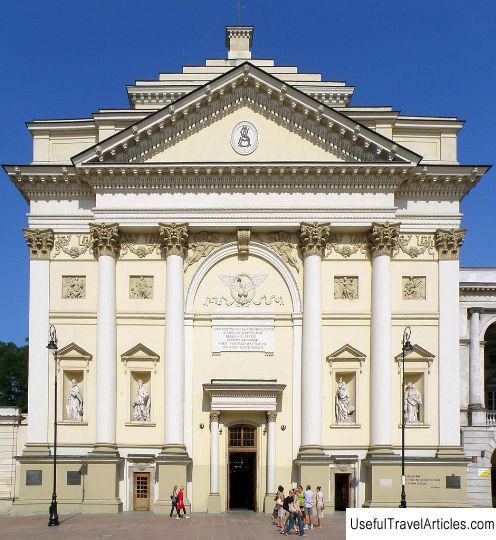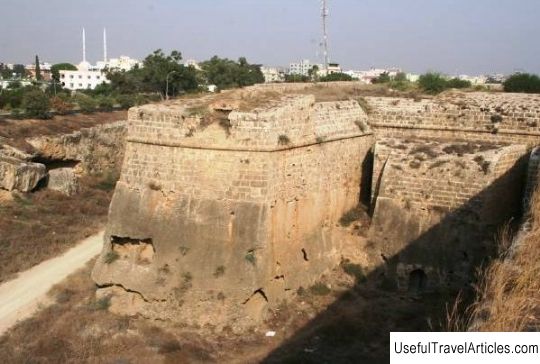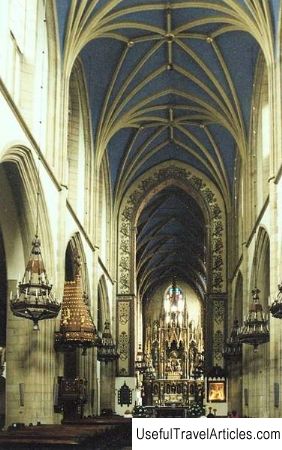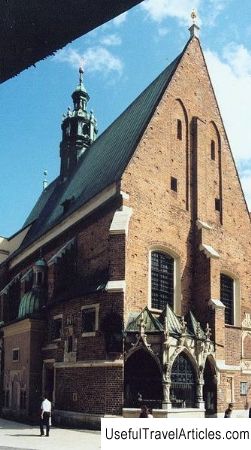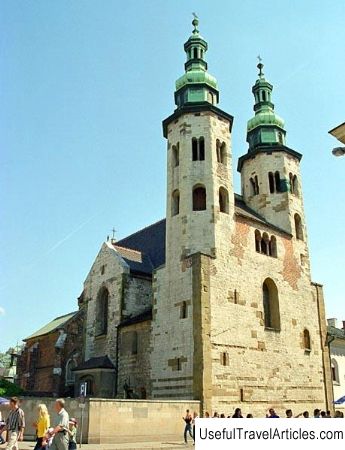Church of St. Anne (Kosciol sw. Anny) description and photos - Poland: Krakow
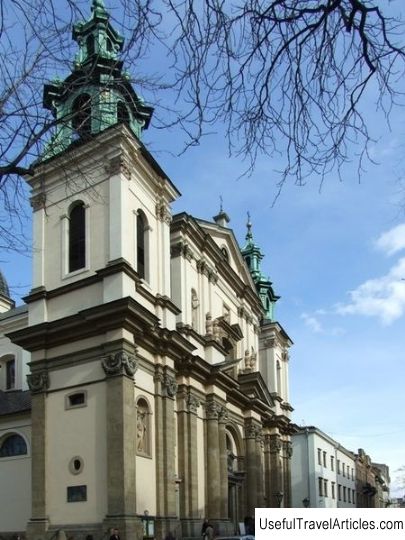
St. Anne's Church (Kosciol sw. Anny) description and photos - Poland: Krakow. Detailed information about the attraction. Description, photographs and a map showing the nearest significant objects. The name in English is Kosciol sw. Anny. Photo and descriptionThe small street of St. Anne is located on the outskirts of the Old Town, however, the road from the Main Market Square to its main attraction - the church of the same name - will take no more than five minutes. This majestic temple, owned by a local university, is not at all suitable for a narrow street. It was built in the Baroque style and is considered one of the most beautiful sacral buildings of the late 17th century in all of Poland. In the period from 1689 to 1703, the architect Tylman from Gameren worked on the construction of the church, who relied on the achievements of Roman masters in developing the project. The central entrance is framed by two turrets that do not overload the facade. Funds for the construction of the Church of St. Anne were received from the royal treasury and from the employees of the Jagiellonian University. The church was built on the site of a dilapidated Gothic church dating from 1418. Before his appearance, the place on St. Anne's street was also not empty. Previously, there was a wooden church that was burnt down during one of the fires. The interior of the church is very luxuriously decorated: alabaster decor, marble columns, frescoes on the ceiling were made under the direction of one person - Balthazar Fontana. It was he who designed the main altar, the central picture of which was painted by Jerzy Eleuther Semigonovsky, the favorite painter of the Polish ruler Jan III Sobieski. The altar fresco depicts the patroness of the church, St. Anna, in three forms. The transverse nave of the church houses a real shrine - the relics of the scientist Jan Kanta, who was later declared a saint. dated 1418. Before his appearance, the place on St. Anne's street was also not empty. Previously, there was a wooden church that was burnt down during one of the fires.The interior of the church is very luxuriously decorated: alabaster decor, marble columns, frescoes on the ceiling were made under the direction of one person - Balthasar Fontana. It was he who designed the main altar, the central picture of which was painted by Jerzy Eleuther Semigonovsky, the favorite painter of the Polish ruler Jan III Sobieski. The altar fresco depicts in three guises the patroness of the church - St. Anna. The transverse nave of the church houses a real shrine - the relics of the scientist Jan Kanta, who was later declared a saint. dated 1418. Before his appearance, the place on St. Anne's street was also not empty. Previously, there was a wooden church that was burnt down during one of the fires.The interior of the church is very luxuriously decorated: alabaster decor, marble columns, frescoes on the ceiling were made under the direction of one person - Balthazar Fontana. It was he who designed the main altar, the central picture of which was painted by Jerzy Eleuther Semigonovsky, the favorite painter of the Polish ruler Jan III Sobieski. The altar fresco depicts the patroness of the church, St. Anna, in three forms. In the transverse nave of the church, a real relic is kept - the relics of the scientist Jan Kanta, who was later declared a saint. burned down during one of the fires.The interior of the church is very magnificently decorated: alabaster decor, marble columns, frescoes on the ceiling were made under the direction of one person - Balthazar Fontana. It was he who designed the main altar, the central picture of which was painted by Jerzy Eleuther Semigonovsky, the favorite painter of the Polish ruler Jan III Sobieski. The altar fresco depicts in three guises the patroness of the church - St. Anna. The transverse nave of the church houses a real shrine - the relics of the scientist Jan Kanta, who was later declared a saint. burned down during one of the fires.The interior of the church is very magnificently decorated: alabaster decor, marble columns, frescoes on the ceiling were made under the direction of one person - Balthasar Fontana. It was he who designed the main altar, the central picture of which was painted by Jerzy Eleuther Semigonovsky, the favorite painter of the Polish ruler Jan III Sobieski. The altar fresco depicts in three guises the patroness of the church - St. Anna. The transverse nave of the church houses a real shrine - the relics of the scientist Jan Kanta, who was later declared a saint. the central picture of which was painted by Jerzy Eleuther Semigonovsky, the favorite painter of the Polish ruler Jan III Sobieski. The altar fresco depicts the patroness of the church, St. Anna, in three forms. The transverse nave of the church houses a real shrine - the relics of the scientist Jan Kanta, who was later declared a saint. the central picture of which was painted by Jerzy Eleuther Semigonovsky, the favorite painter of the Polish ruler Jan III Sobieski. The altar fresco depicts the patroness of the church, St. Anna, in three forms. The transverse nave of the church houses a real shrine - the relics of the scientist Jan Kanta, who was later declared a saint.      We also recommend reading Basilica of St. Anthony description and photos - Bulgaria: Melnik Topic: Church of St. Anne (Kosciol sw. Anny) description and photos - Poland: Krakow. |
